Every ecommerce customer retention strategy starts with creating a best-in-class customer experience driven by segmentation and personalization.
In order to segment your audience and personalize their customer journey, you need to collect and leverage first and zero-party data in your marketing efforts.
What's the difference?
First-party data is onsite behavioral data from customers, while zero-party data is data given directly by customers to your brand. For first-party data think what web pages have been visited and products a customer has purchased, and for zero-party data think a post-purchase survey or quiz where a visitor is volunteering information to an ecommerce store directly.
Let's Talk Retention
The cost of new customer acquisition continues to rise and increasing competition across the e-commerce landscape is forcing many brands to take a good hard look at how sustainable their business is. Consequently, the best way to stay in business is retention marketing: retain your existing customers and get them to spend more.
Seems obvious, right? But it’s a lot easier said than done.
The average ecommerce business today has been hooked on extremely cheap customer acquisition funnels and is scrambling to invest in the post-purchase retention experience.
Turning a site visitor into a repeat customer can truly only be achieved through relationship building. Brands can no longer get away with just sending “Hey {your name}” emails. Everyone is used to seeing that, and it no longer feels personalized.
Consumers expect more now.
They have a backstory, they have a unique journey with your brand, and most importantly, they often want to be a part of your brand if you just touch on the right personalization points. Research showcases that over 60% of consumers want brands to connect with them.
The best way I’ve found to improve the standard ecommerce customer retention strategy is very simple: just think about what you'd like your customer journey to be with your own brand. What would be helpful to you if it was personalized?
Your goal should be to guide the customer journey both in terms of product discovery and repeat purchasing but also harness brand loyalty based on the compiled profile of first and zero-party data you have on each one of your customers.
The brands that realize their customers are more than a name and order value in their CRM are the ones that will be successful in 2022 and beyond.
Segmentation & Personalization: Why is it important?
The benefits of first and zero-party data are twofold, including communicating with your customers and informing business decisions based on customers' input.
In 2020, 80% of consumers stated they want personalization. Therefore, utilizing segmentation and personalization are crucial for a retention strategy as it allows for a customer journey that is tailored to an individual, as opposed to feeling like just another customer buying from a brand.
And it doesn’t have to be overly complex either.
For example, let's look at two simple messages from a beauty company:
- Message A: Hey, {Product B} is 20% off!
- Message B: Hey {First Name}, we know you’ve had success with {Product A} (thanks again for that 5-star review!) but we can be doing more. Our team was evaluating your {Skin Concern 1} and {Skin Concern 2}, and think {Product B} combined with {Product A} will help support your unique skin profile and health even more! Here’s a special 20% off code to experience the power of combining both.
Which is more likely to get you to click? Which is more likely to get you to purchase?
More often than not, it’s message B, and the data backs it up. Message B had a click-through rate (CTR) 6.8% higher than message A.
Why? Because it was personalized and segmented to you, based on first and zero-party data.
Segmenting your database and personalizing communication will keep your customers engaged and spending more for longer, ultimately increasing their LTV.
What is LTV?
Customer lifetime value (CLTV or LTV) is how much revenue a customer is worth to you over the course of their relationship with your brand. This is a strong indicator of the overall health of your business, and you want to aim for at least a 3:1 LTV to CAC ratio.
In other words, if it costs you $50 to acquire a customer, you'll want to make sure your average LTV is at least $150.
What is and how to calculate customer retention rate?
Now that we're talking metrics, you should also get familiar with customer retention rate (CRR), which is the percentage of existing customers who remain loyal customers after a given period.
To calculate your current customer retention rate, use the equation below:
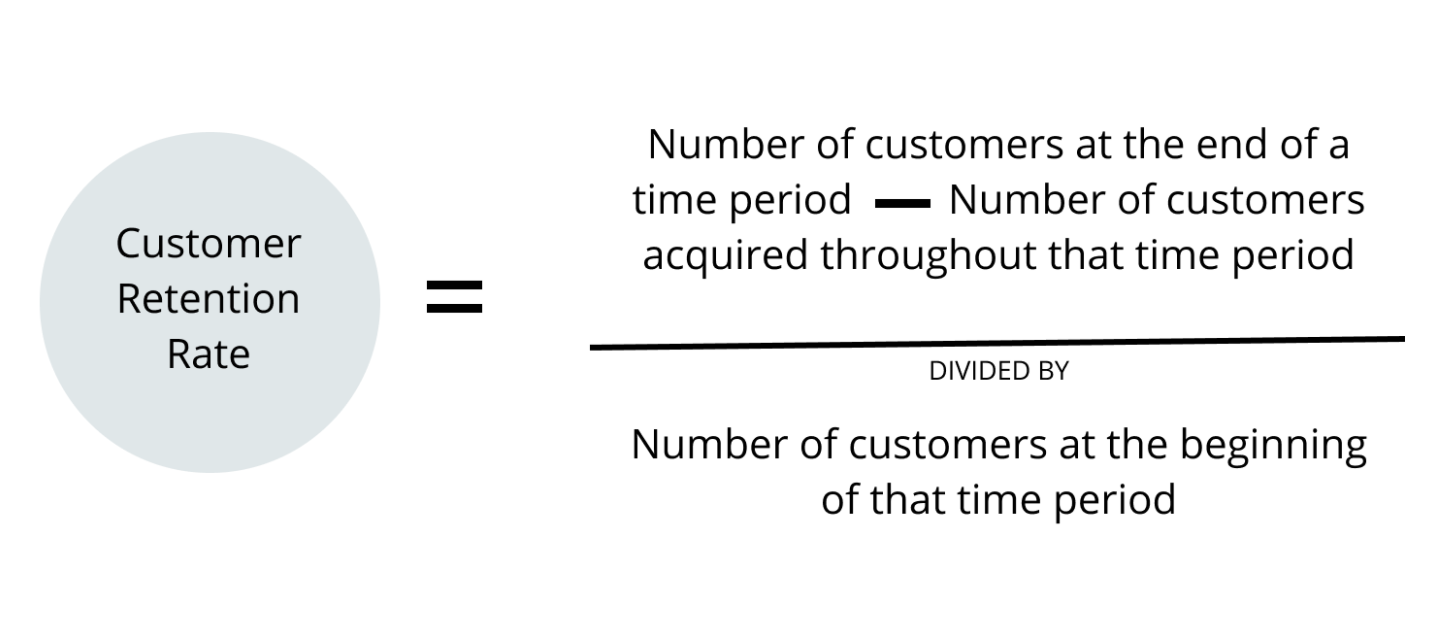
Take into account that the average ecommerce CRR is about 30%. If your rate is much higher, then just stop reading this and go pat yourself on the back, you deserve it! If your number is below or about 30%, don't worry because there are a few customer retention strategies you can start implementing to increase your customer retention rate.
A Retention Strategy Starts with Scalable Data
Have I mentioned that segmentation and personalization should be the driving factors behind your ecommerce customer retention strategy? 😅
Now that we’ve really established that, how can you go about data collection, and what are some important things to watch out for?
For starters, you’ll want to ensure the Shopify apps you are utilizing integrate with one another. If your customer data isn’t uniform across all platforms, it’s going to be extremely difficult to create a cohesive customer retention journey.
Pro-tip: Use integration apps like Alloy Automation to sync your zero and first-party data across over 200 ecommerce apps.
Here’s a shortlist of some of the ways you should be gathering customer data:
- Pre-purchase product finder quiz with Octane AI
- Post-purchase survey with Enquire Labs
- Product reviews with Okendo
- SMS marketing conversational flows with Attentive
- Customer loyalty program with Loyalty Lion
- Customer service with Gorgias
If you want more ways to collect zero-party data, read this.
Great, now that you’ve got some data, where can you leverage personalized communications?
- Email marketing flows and campaigns with Klaviyo
- SMS campaigns with Klaviyo or Attentive
- Order tracking pages with Malomo
- Personalized onsite content with Google Optimize
- Customer Account Pages
This is not a one-size-fits-all strategy, but this should give you a strong overview of how to create a foundational retention strategy with segmentation and personalization at the core.
And If you want more ways to leverage zero-party data for ecommerce personalization, download our zero-party data marketing playbook.
Ecommerce Customer Retention Strategies Examples
Getting started with a retention strategy is often the hardest part, as there are many moving parts that you can include and must assess. However, once you have your goal set, starting is that much easier.
Let's walk through a combined approach from three high-performing Shopify stores.
Learning from florence by mills, Disco and Soylent
The overall strategy of these brands is to create an engaging experience for site visitors to develop communication that resonates with the recipient for a unique customer journey from one-time shoppers to brand advocates.
Their retention strategy is dynamic with several A/B testing locations, swapping tools as needed, priority levels, and an emphasis on how we gather data.
The two constants are the need for tools to support first and zero-party data collection and utilize the data to build a personalized journey.
Quiz
Quizzes are the best way to begin your retention strategy. You can collect a load of zero-party data and capture an opt-in to continue the conversation in your owned channels.
We saw a 2X conversion rate with the implementation of a quiz on the florence by mills online store and it was an added element to the customer journey.
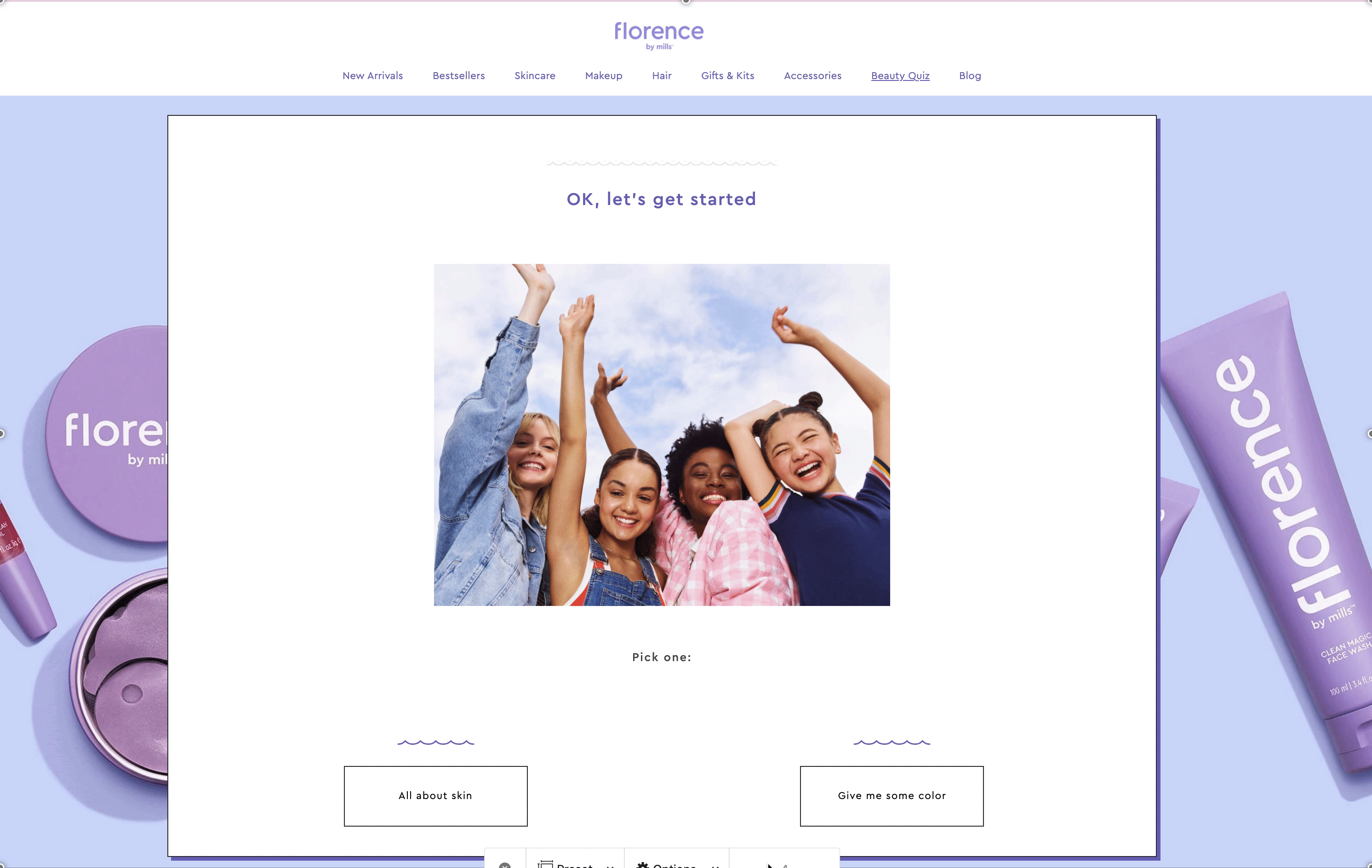
Add your quiz anywhere it makes sense to engage with and learn more about your customers.
Key locations include your navigation bar, the home page, “all” collection page, footers, welcome and exit pop-ups, and depending on the type of quiz on a product page.

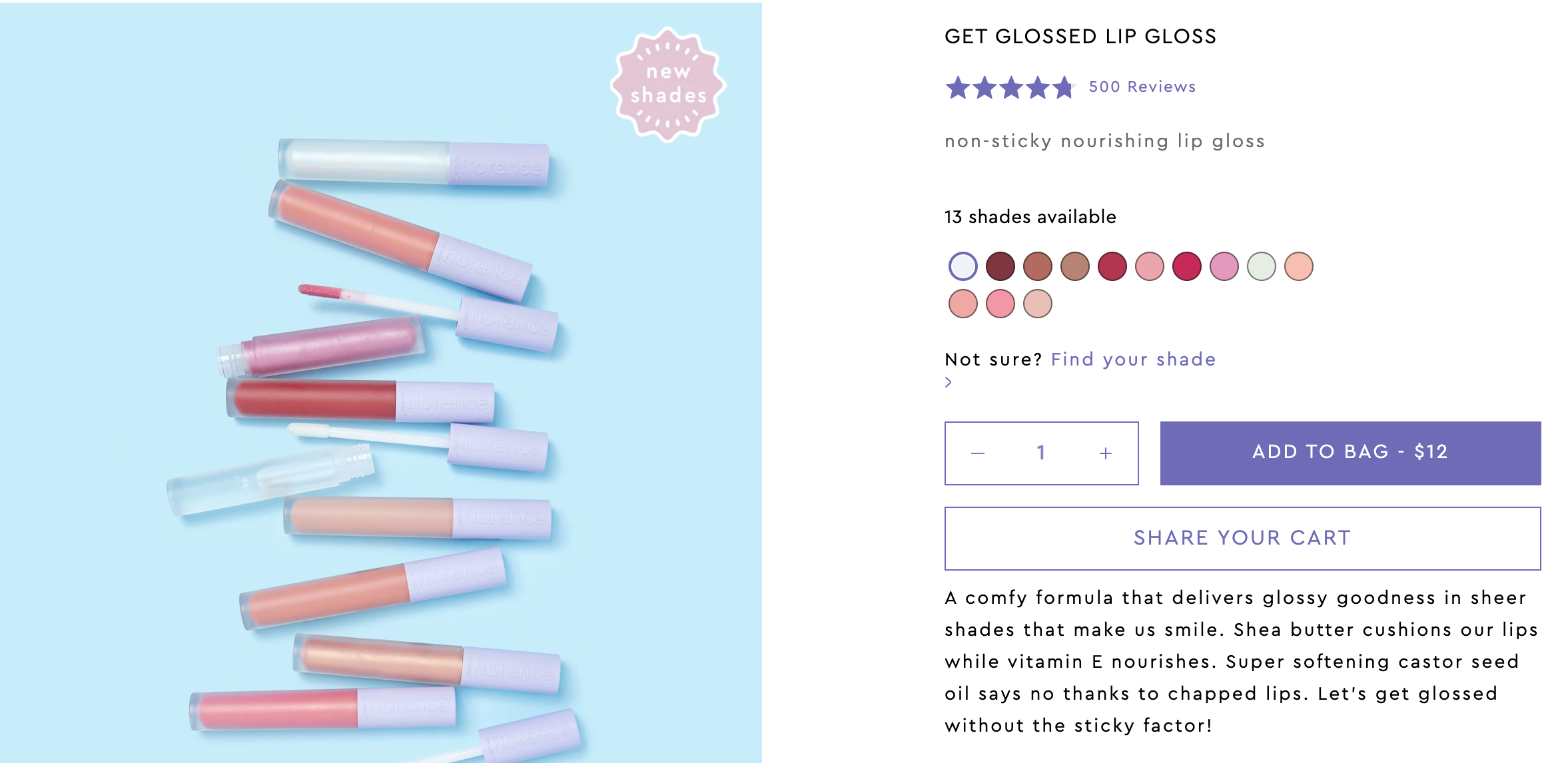

Email and SMS
Your marketing communications (especially flows) act as a strong foundation for your campaigns to build off.
Pass your first and zero-party data for segmenting campaigns to create more personalized product recommendations, brand education, tips and tricks, etc.
Utilizing your data for scalable personalization enables a strong communication foundation.
Disco, a skincare brand created for men, uses each customer's quiz answers (skin: oily, dry, unsure) to segment and personalize customers' emails:
Meanwhile, florence by mills sends a personalized abandoned cart SMS text to customers with their quiz results along with a custom incentive to complete a purchase.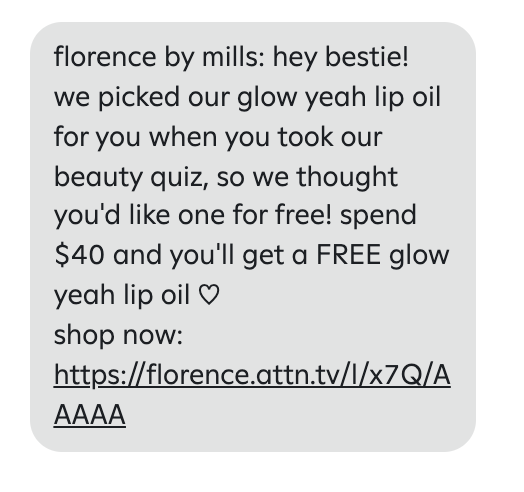
Reviews
Utilize an app that allows you to elevate your social proof. Allow reviewers to include product attributes, demographic data, how they use your product, etc.
From here, you can utilize demographic data and how they utilize your product for segmentation and personalization within the campaigns they receive.
Have a flow ready for requesting reviews from customers, but ensure that you are preemptive in your timing (take into consideration shipping delays, time to try your product, etc).
- For a positive review, send an additional email/text asking if they want to refer a friend for rewards.
- For a negative review, send a personalized follow-up email/text from the CEO or customer support specialist asking for further clarification.
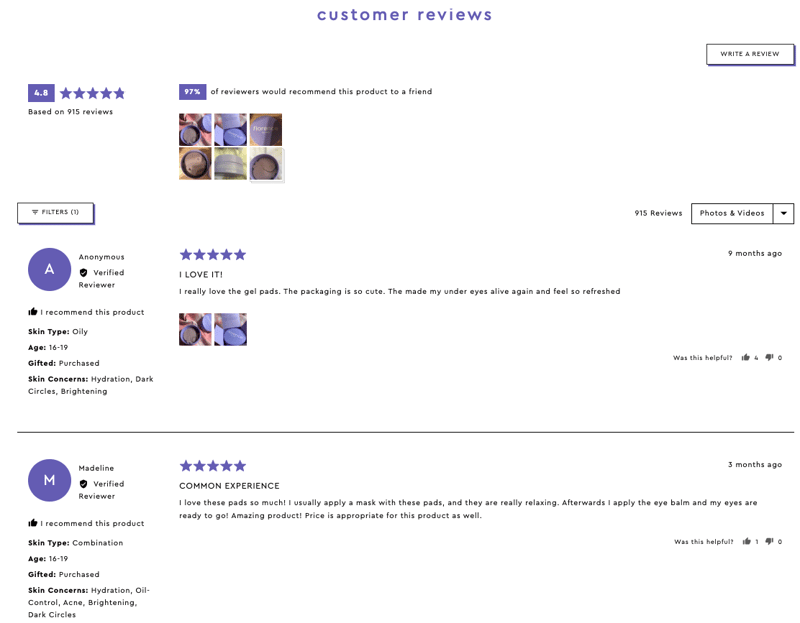
Post-purchase Survey
Post-purchase surveys are great for understanding where your customers heard about you, what new products they want to see, how their site experience was, and essentially anything else after they convert from a one-time existing customer into repeat customers. You are even able to (and should) segment your questions based on the customers' order number and other key differentiators.
In one of our post-purchase surveys, when asked “Who did you place this order for?”, we saw a 50% response rate. From there we were able to utilize the responses for segmentation purposes in our email communications out of Klaviyo.
.png?width=1400&name=0_h3cOcpgqcWDSWfyi%20(1).png)
Post-purchase Branded Page
Creating a branded post-purchase experience with Malomo allows you to further brand awareness (especially as this page gets visited on average 4.6x per order).
Here you are able to begin segmentation experiences for one-time shoppers and subscription holders. You are also able to promote different aspects of your brand on this page, including social, subscription programs, blog, and more.
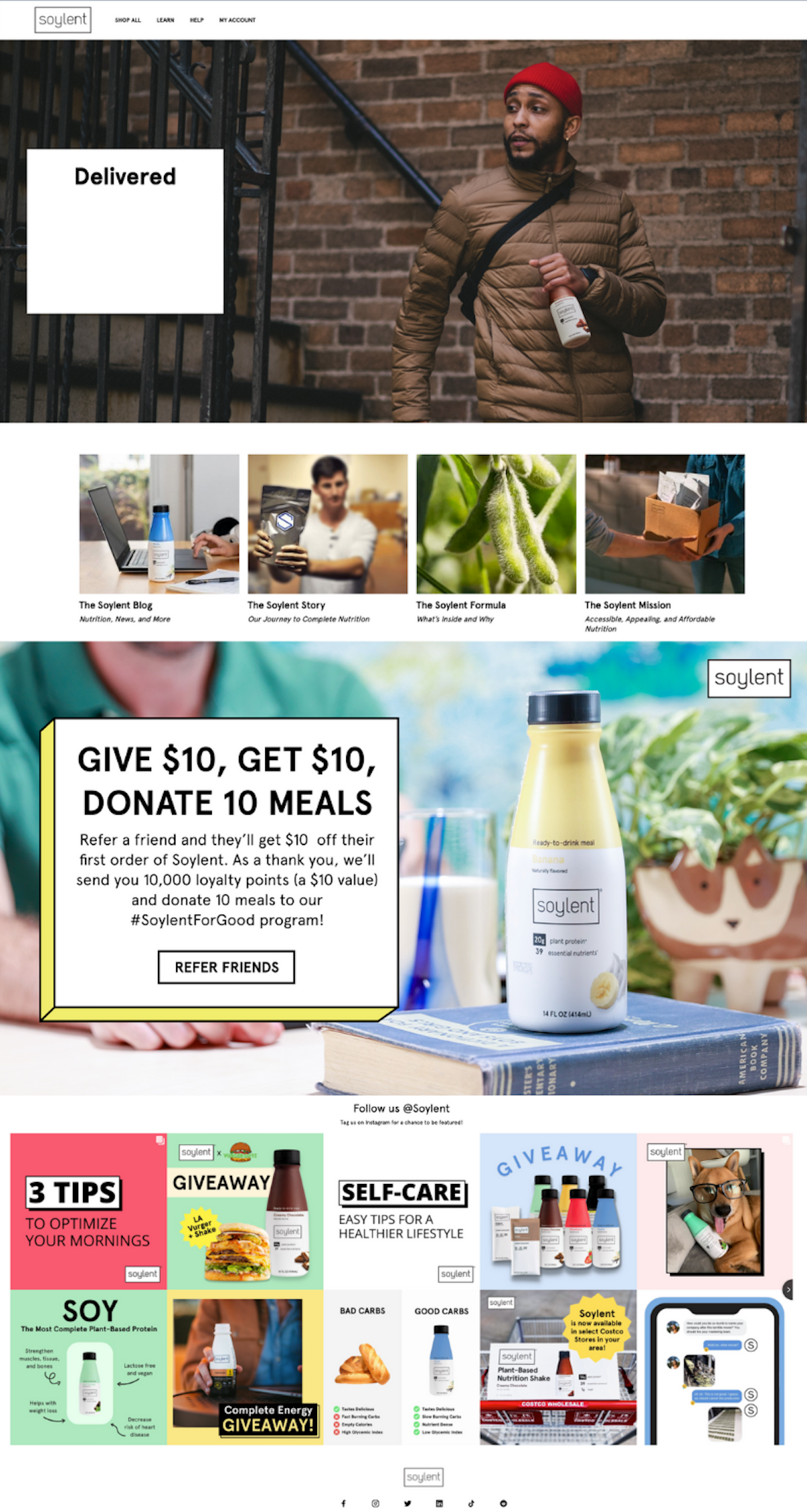
Loyalty and Rewards
Like many aspects of your retention strategy, everything needs a home and should be easy to access. The account portal is the perfect place for these to live.
To promote loyalty and rewards programs, utilize flows and campaigns by segmenting and sending them to your most engaged customers.
And before building out your customer account portal, ensure that you are keeping in mind UI/UX best practices to avoid any additional friction on this page.
Maintaining Strong Customer Retention
Use your data! Don't be afraid to actually communicate with your customers! The more personable your brand is the more you will be able to resonate with your customer, increase lifetime value, and turn each one of them into a loyal customer.
Remember don't set up some post-purchase flows and just leave things sitting there.
TEST!
Your strategy is only as strong as the data that backs it up, and without A/B testing (or multivariate testing) everything you do from there you’ll have no idea whether X type of consumer would’ve responded better to something else.
Having a retention strategy in place is great. Having a retention strategy that focuses on segmentation and personalization through utilizing first and zero-party data collection is even better. But having all of that and leaving room for testing and adapting is the winning path to true customer loyalty and retention.
Above all, just think about how you'd like to be treated as a customer.
Your brand will be better off for it.


